10 - 15 September
Having left all my "town" gears in Zaragoza, I arrived in the small mountain village of Torla after two busses through increasingly hilly territory. There were several
refugios in the town, which cater for trekkers passing through, and offer pretty cheap accommodation - I had my own sleeping bag, thankfully, and got just a mattress and a hot shower for €10.
That left me the afternoon to plan my 4 days of trekking and explore the small town. It was a very pretty little spot, with that crisp clean air you only get in the mountains. It was also a bit colder - actually a nice relief from the heat of Italy and Barcelona for a change.
 |
| From Torla looking out towards Valle de Ordesa (Ordesa Valley) |
 |
| Backdrop within Torla township |
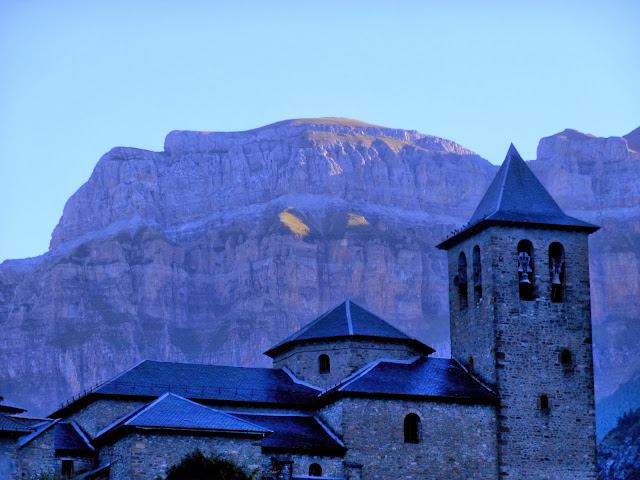 |
| Dawn in Torla |
For my first day of hiking I elected to do a day trip into the Valle de Ordesa, heading up towards the tallest peak in the area, Monte Perdido (or Mont Perdu in French - translating as the Lost Mountain). I caught a visitor bus into the national park - private cars aren't allowed - and took a challenging track heading straight up the side of the valley to a shelf, which I then walked along. The tough climb was definitely worth it, with the views into, along and across the valley being absolutely spectacular. I don't think the photos really do the majesty of this place justice.
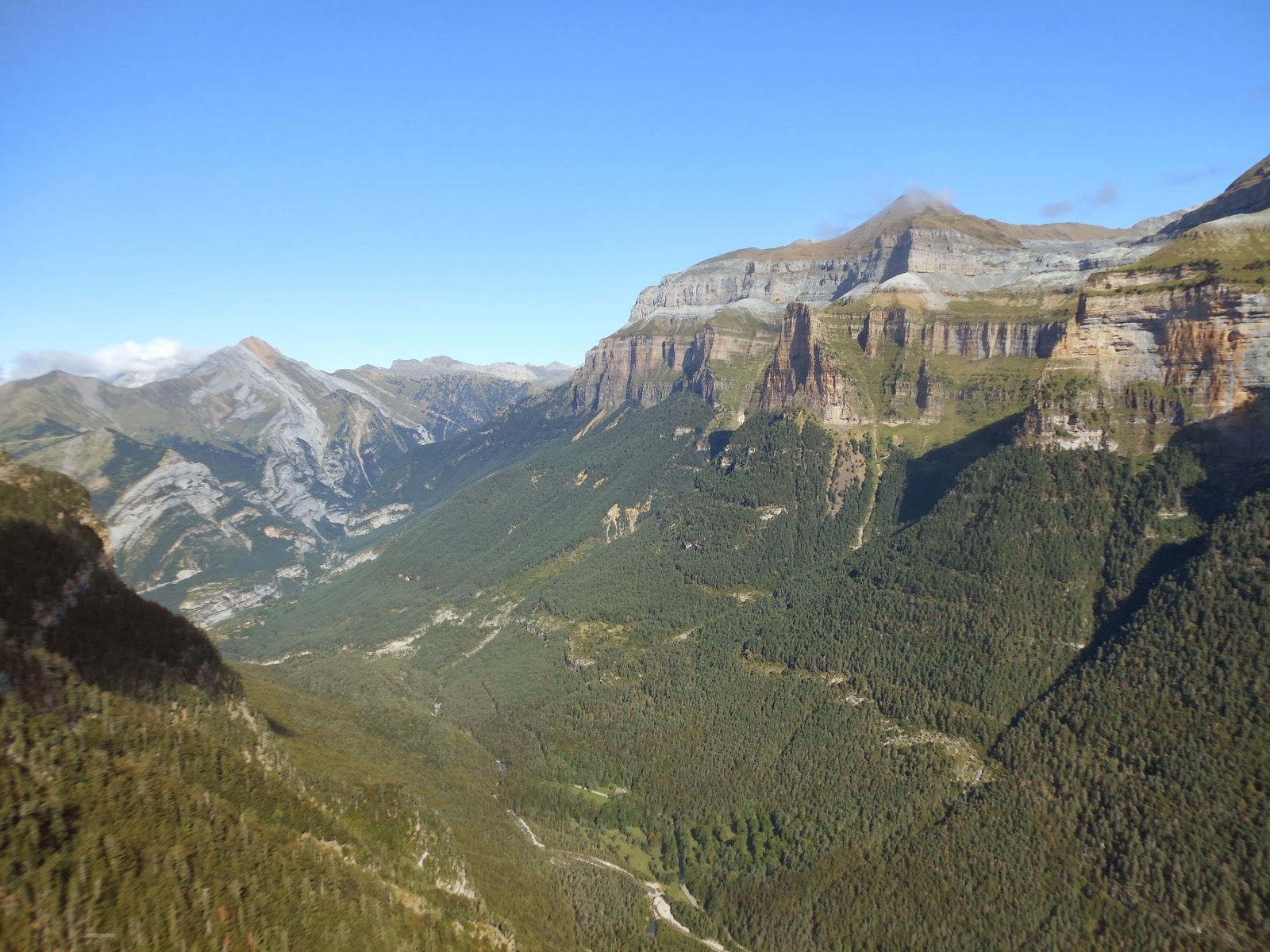 |
| View back down the Valle de Ordesa valley from the Faja de Pelay shelf |
 |
View directly across the valley including the Breca de Roldán - the dent in the skyline at the left of the photo that lies on the Spanish/French border. More about that later!
(Breca de Roldán is the Aragonese name. It's called La Brèche de Roland in French, or Brecha de Rolando in Spanish) |
 |
| More valley views including the cliff I'd stood on top of at a lookout |
 |
| Chamois spotted ahead on the track |
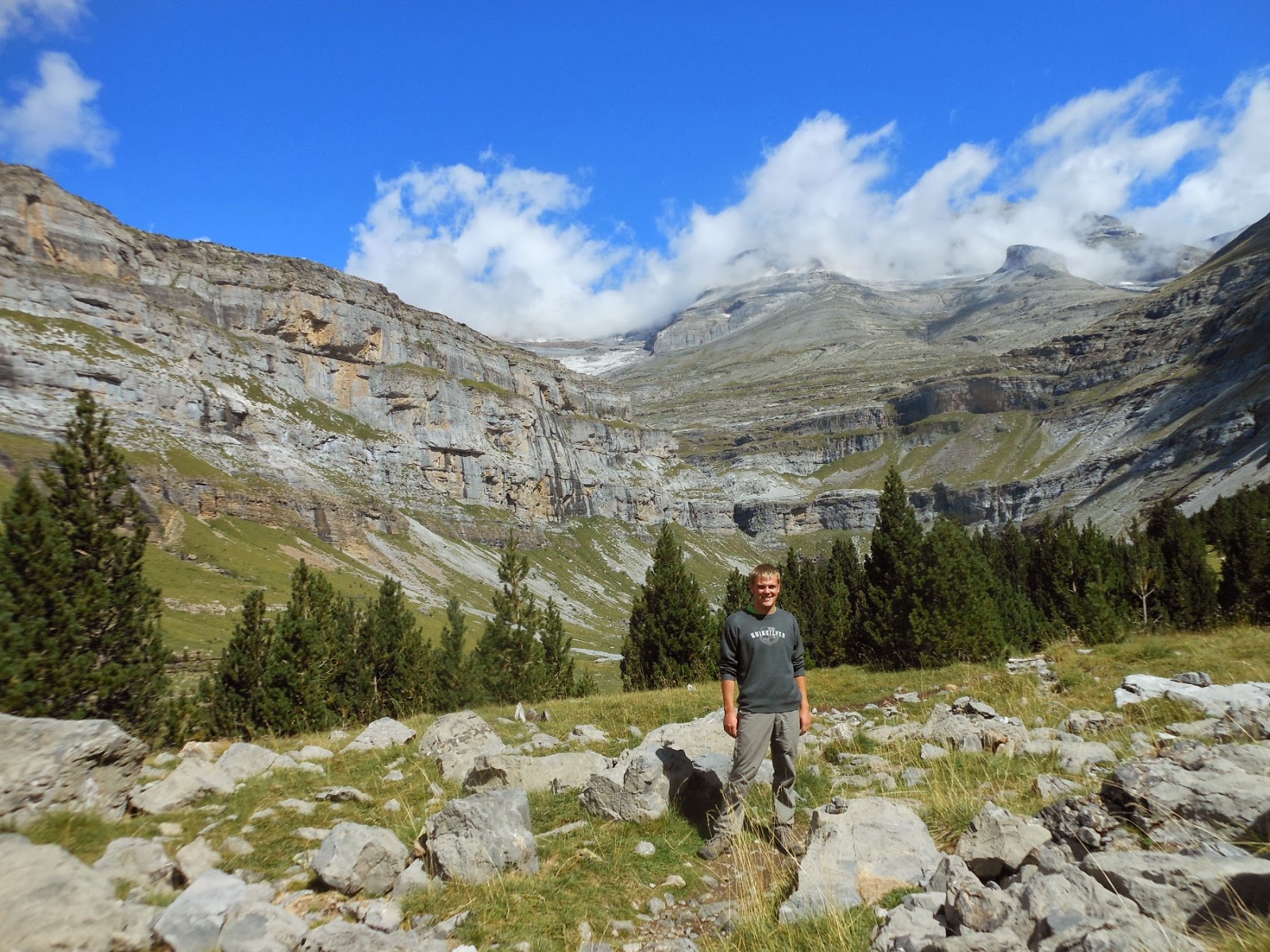 |
| View at the top of the valley with Monte Perdido hidden (lost?) in the clouds behind |
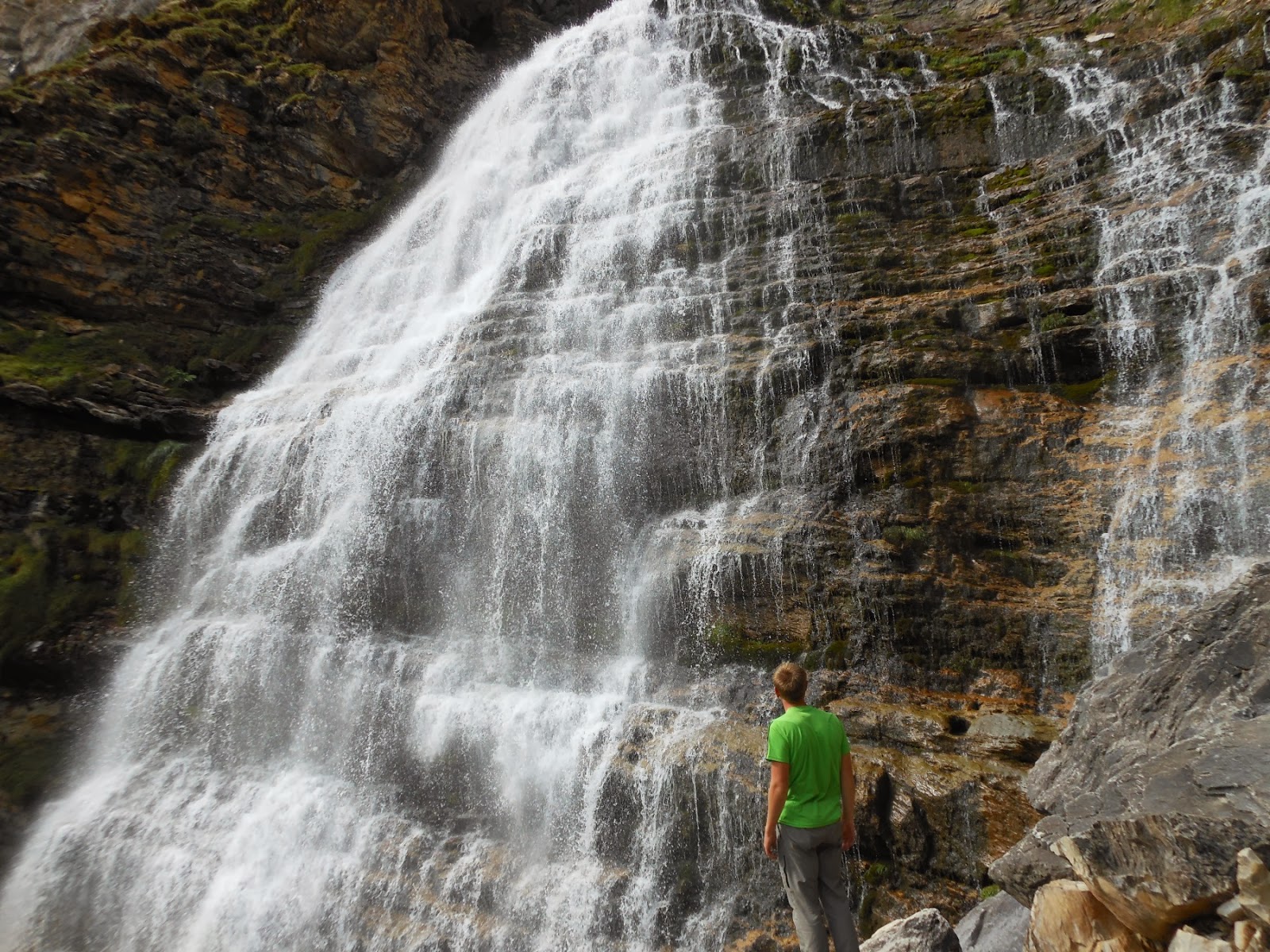 |
| Cola de Caballo waterfall, which translates as the horse's tail |
The stunning views simply didn't stop all day, and I enjoyed a lunch of fruit, cheese and crackers near the waterfall before taking a slightly easier route back along the valley floor.
After a second night in Torla, I packed up my pack and headed north along the walking tracks towards Bujaruelo. It was a pleasant walk, quite quiet and mostly along a river that had carved out a small canyon in the valley floor. It took a few hours with my heavy overloaded pack until I arrived at the
Refugio de Bujaruelo, which was a tiny settlement (read: three buildings) and my accommodation for the next two nights. They even had beer on tap!
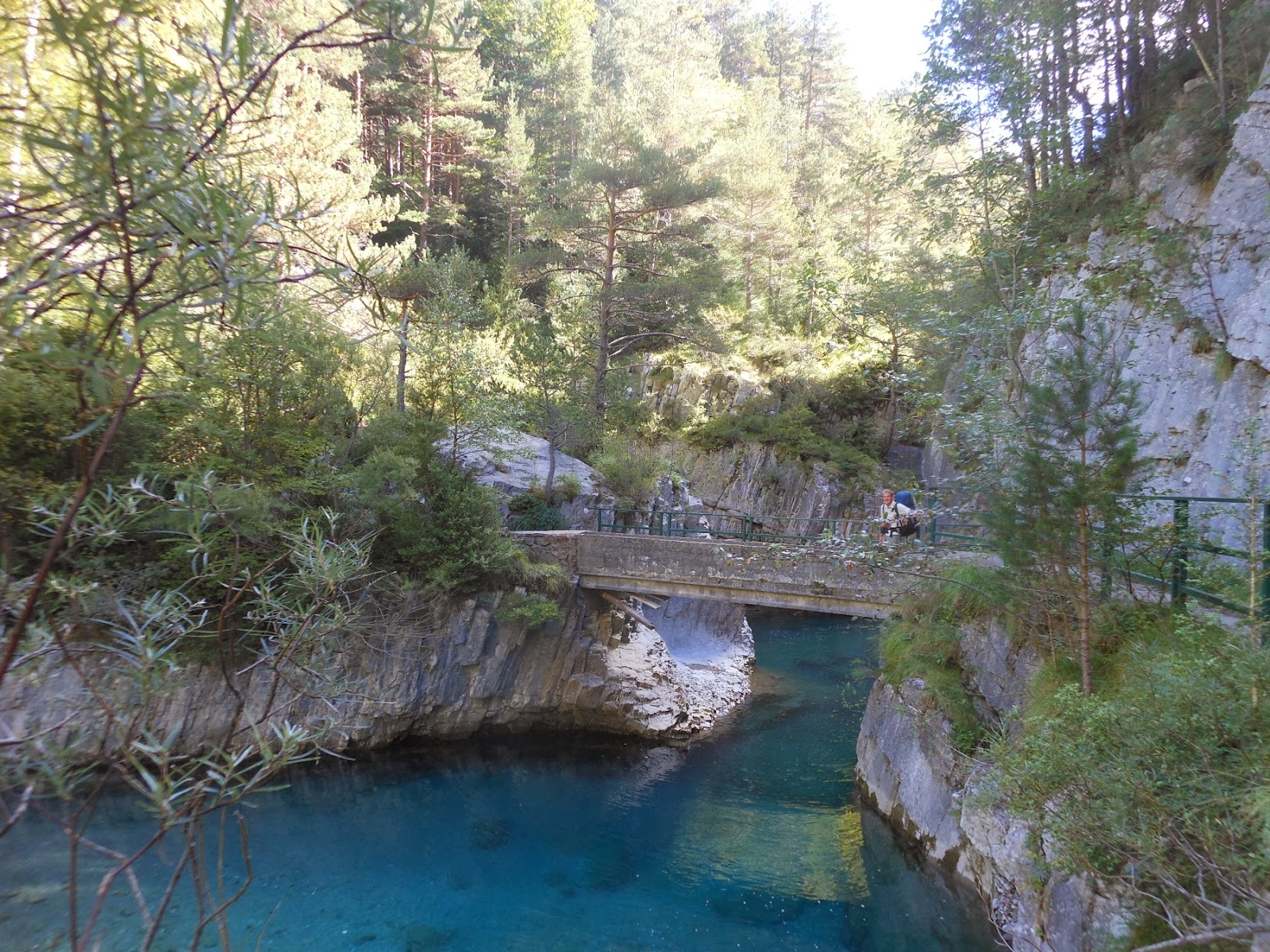 |
| On a bridge in the canyon |
 |
| Muesli bar stop with my trusty Kathmandu pack, jandals and Maori name tag attached |
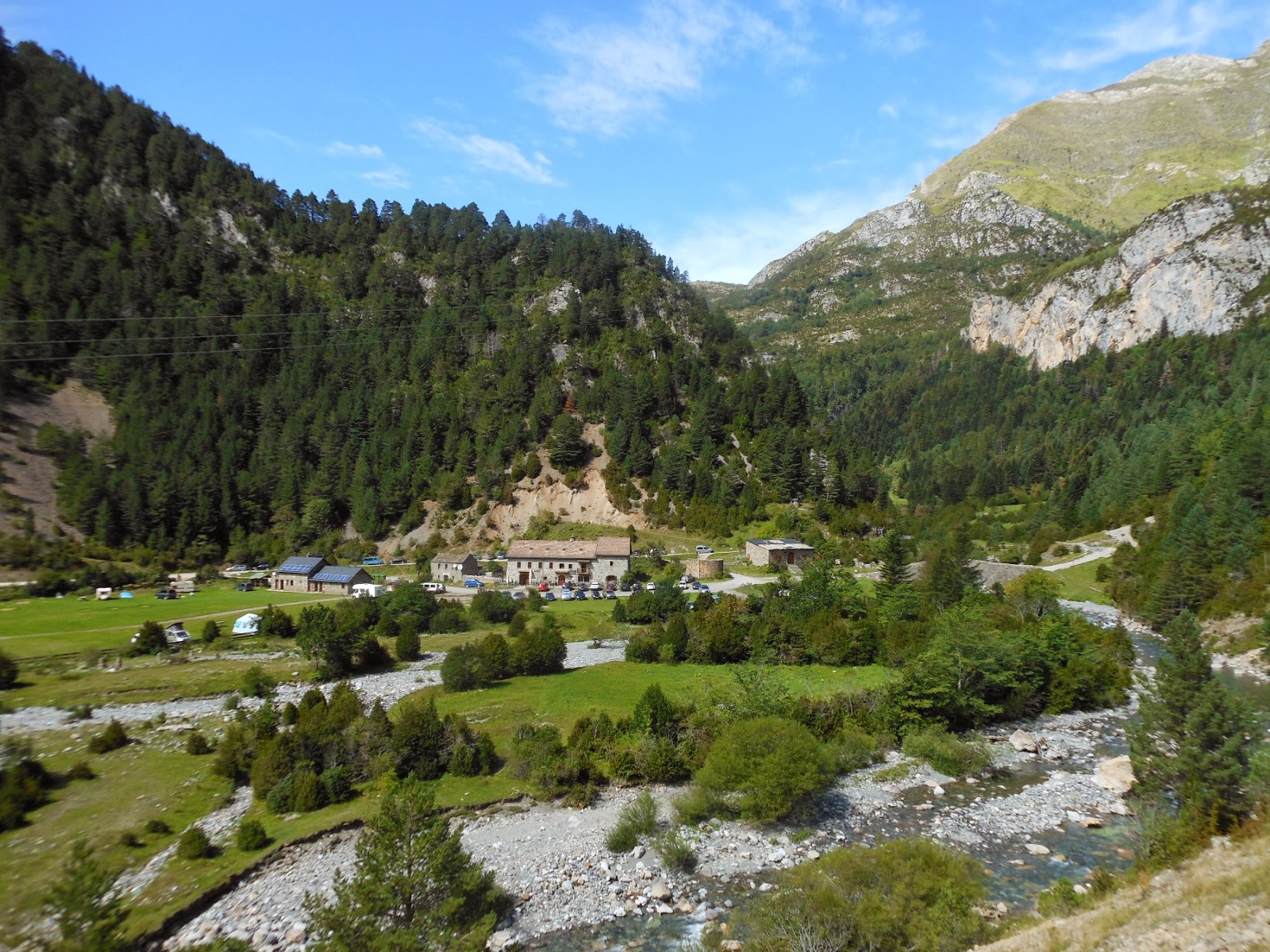 |
| Bujaruelo |
I enjoyed a quiet evening in the
refugio, and next morning set off early straight up the hill towards the
Puerto de Bujaruelo, a pass between Spain and France. Passing several marmots, and with several other groups of hikers around also, I reached the border pass for lunchtime, to be rewarded with more amazing views (of course!).
 |
| Three hours straight uphill to France |
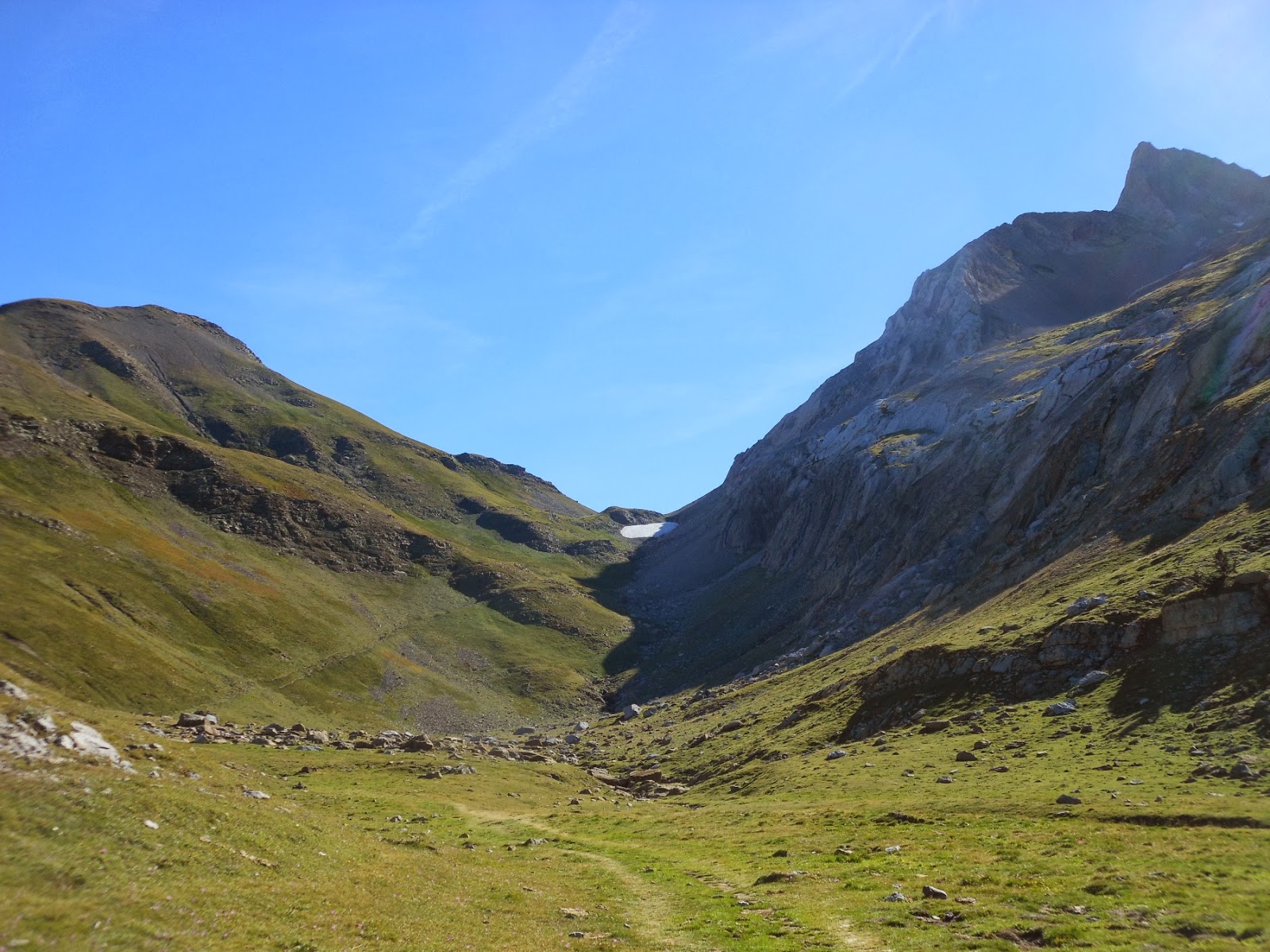 |
| The border pass with a touch of snow left |
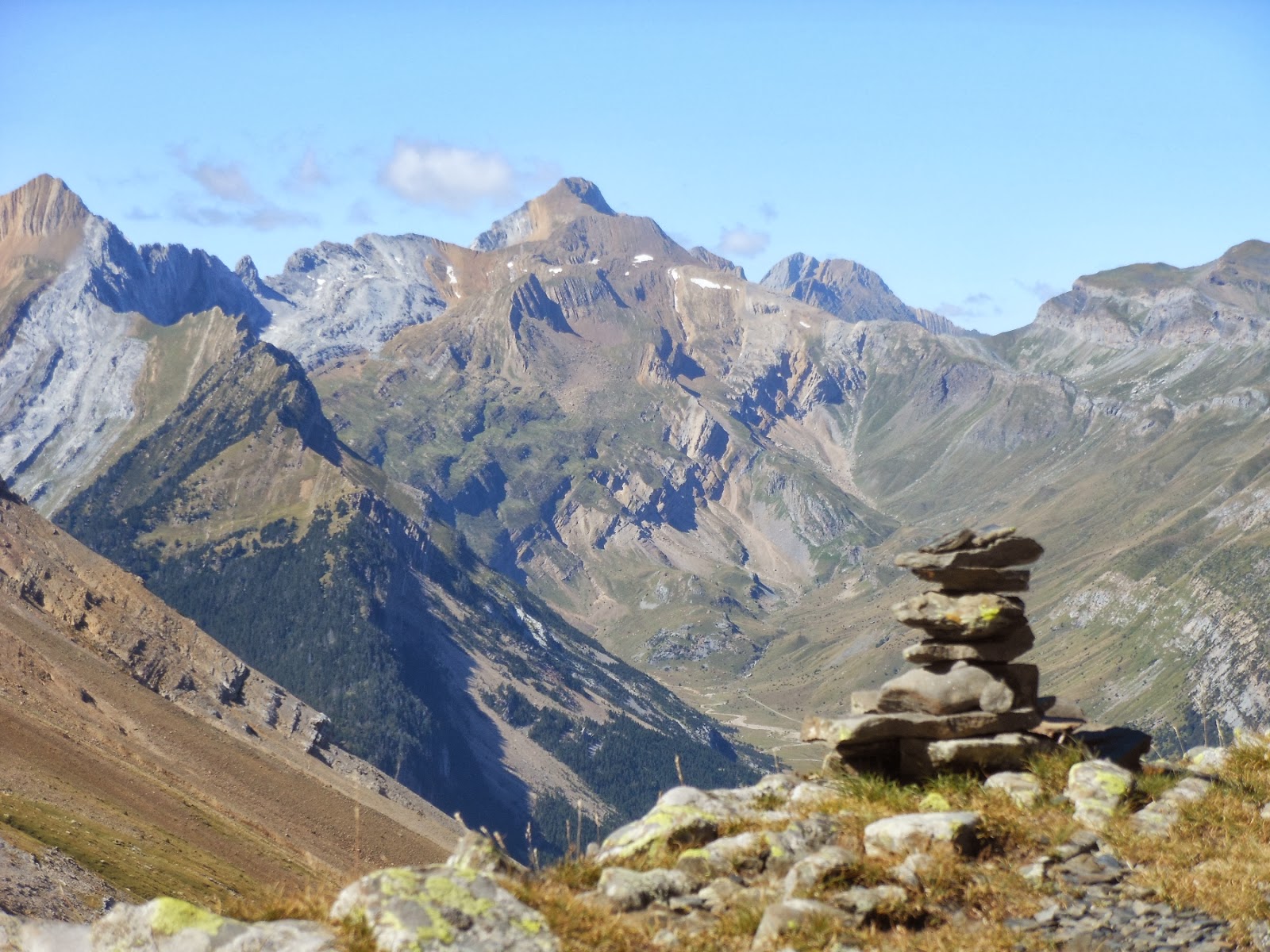 |
| View back down into Spain from the border |
Over lunch I got talking to a group of five Spanish men who were heading to another
refugio for the night on the French side. I decided to head on to there too, as it was located below the Breca de Roldán I'd seen from afar several days ago and that was supposed to be quite impressive. Once I got there, I got convinced to walk right up to the breach, and boy was that worth it!
Oh, and I had to start saying "Bonjour" to people, instead of "Hola". Stupid France.
 |
View of Refuge des Sarradets (mid-right of photo) and skyline
(within France; ridgeline is the border) |
 |
| Final ascent up to the Breca - 2804 m altitude, 100 m high and 40 m wide |
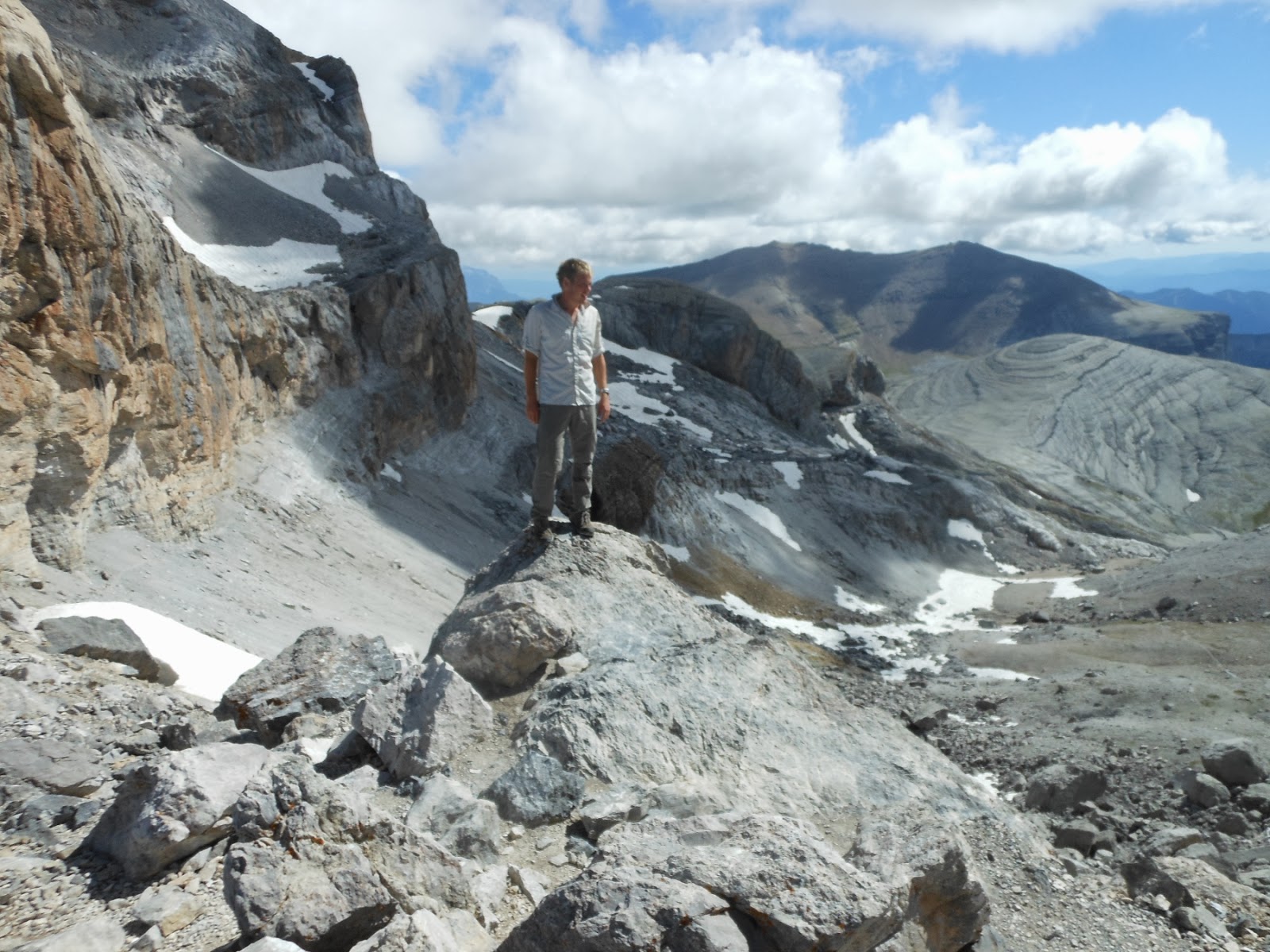 |
| Back in Spain - view from the Breca |
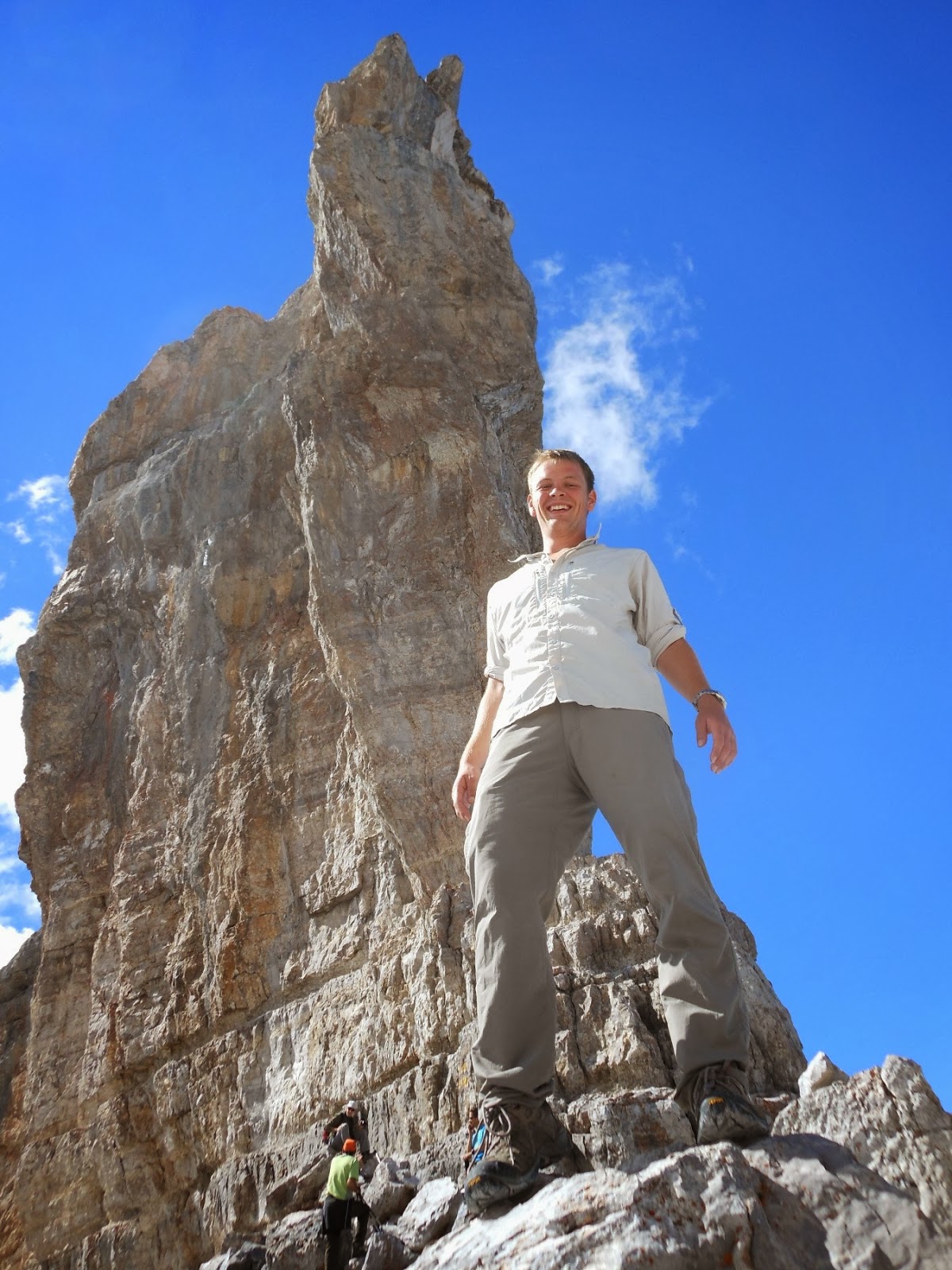 |
| Overshadowed by the massive rock face of the Breca |
I only had about 10 minutes at the top before realising I really needed to head back to Bujaruelo to get back before dark. Thankfully it was all downhill, and I made good time to get home half an hour before dusk set in.
Leaving in the morning, I set off back for Torla. The empty
refugio I'd stayed in the first night was full (!) and I suddenly realised it was a weekend. Thankfully one of the others in town had a couple of spare beds and I relaxed in town for the evening. The next morning was spent beside the river, writing my journal and waiting for the bus back to Zaragoza in the late afternoon.
 |
| Blister? No problem! Keep calm and carry on... |
One of the things I really enjoyed about this trip was that I spoke almost zero English in five days. I was having to rely heavily on my Spanish and was quite pleased that it was still up to task! The joy of getting out into the countryside where foreign tourists are normally not found was a bit of a challenge, a thrill, a relief from the city and a very enjoyable experience.
So, back to Zaragoza to pick up the rest of my things, and then a train down to the western side of Spain and the Atlantic Ocean - San Sebastián (or Donostia in Basque).
